#amazon accounting services
Explore tagged Tumblr posts
Text
The Benefits of Using Amazon Accounting Services

As an Amazon seller, managing finances efficiently is crucial to the success and growth of your business. While some sellers may try to handle their accounting on their own, using professional Amazon accounting services can provide significant advantages that ensure accuracy, compliance, and strategic financial management. Here are the key benefits of working with Amazon accounting experts.
Expertise in Amazon’s Complex Fee Structure
Amazon has a detailed and multi-faceted fee structure that includes referral fees, fulfillment fees, storage fees, and advertising costs. For many sellers, keeping track of these fees and understanding their impact on profit margins can be overwhelming. An Amazon accountant is well-versed in this fee structure and can ensure that all fees are properly tracked, categorized, and deducted from your revenue. This expertise helps you get a clearer picture of your actual profit margins and avoid financial miscalculations.
Accurate Tax Filing and Compliance
Navigating sales tax requirements can be particularly challenging for Amazon sellers. Each state in the U.S. has different rules for sales tax, and Amazon operates under Marketplace Facilitator Laws, which means the platform collects taxes on behalf of sellers in certain regions. An Amazon accountant understands these tax regulations and ensures that you remain compliant with federal, state, and local tax laws. This reduces the risk of audits, penalties, and fines while optimizing tax deductions to lower your overall tax burden.
Maximizing Tax Deductions
Professional accounting services help Amazon sellers identify and take full advantage of potential tax deductions. From inventory costs to shipping fees, advertising expenses, and software subscriptions, there are numerous deductions available to reduce taxable income. An Amazon accounting expert ensures that all eligible deductions are claimed, which helps minimize taxes owed and improves your overall profitability. By leveraging tax-saving strategies, sellers can reinvest more money into their business, fueling growth and expansion.
Efficient Inventory Management
Inventory is a significant expense for Amazon sellers, and proper management is essential for maintaining cash flow. Mistakes in inventory tracking or overstocking can tie up capital and lead to unnecessary storage fees while understocking can result in missed sales opportunities. Amazon accounting services help ensure that inventory levels are accurately tracked, the cost of goods sold (COGS) is properly calculated, and restocking is strategically planned. This enhances cash flow and ensures that you have the right products available at the right time.
Time and Resource Savings
Managing accounting tasks in addition to running your Amazon business can be time-consuming and stressful. By outsourcing accounting functions to professionals, you free up valuable time to focus on growing your business, such as expanding your product line, optimizing listings, or running marketing campaigns. Amazon accounting services also reduce the chances of mistakes, which can save both time and money in the long run.
Customized Financial Reporting and Insights
An experienced Amazon accountant can provide tailored financial reports and insights that are specific to your business model. These reports offer a clear picture of your financial health, including cash flow, profitability, and expenses. By understanding these key metrics, you can make data-driven decisions that improve the efficiency and profitability of your business. Additionally, accurate financial reports are vital when applying for business loans or seeking investment.
Scalability and Growth Support
As your Amazon business grows, the financial complexities increase. Professional accounting services help manage this growth by providing scalable solutions that can adapt to your evolving needs. Whether you’re expanding to new marketplaces, launching more products, or increasing your inventory, an accountant can ensure that your financial management systems keep up with the changes. This strategic support enables you to scale your business without getting bogged down in financial details.
Conclusion
Using Amazon accounting services offers Amazon sellers significant benefits in terms of accuracy, efficiency, tax savings, and growth support. With an expert managing your financial tasks, you can focus on what matters most: growing your business. From navigating complex fees and taxes to maximizing deductions and improving cash flow, professional accounting services help ensure that your Amazon business is financially sound and prepared for long-term success.
0 notes
Text
In the Garden with You: This is a heartwarming story of love, the special bond between a mother and daughter, and the ever-changing seasons of their life in the garden.
#french author#amazon#marketing#authors#author#audio#poetry#audiobooks#love poem#accounting#amazon books#marketplace#book translation services#book blog#book review#booklr#bookworm#book photography#bookish#the book of bill#bookblr#books and reading#books & libraries#reading#books
3 notes
·
View notes
Text
last year i paid for a yearly plan to host my portfolio with wix. now i know they are israeli i went to delete my account.
my account CANNOT BE DELETED.


wix requires me to wait until my plans expire before it will delete my account. even though i cancelled all payments and deleted everything in there.
let me delete!!!! I DO NOT WANT TO BE COUNTED AS A USER!!!!!
does anybody know if this is legal, or even what jurisdiction applies? sorry to be an idiot, but is this genuinely allowed???
#bds#wix#???#account termination#their costumer service is strictly through calls and i cant call now it's past midnight and my roommate is already pissed at me#i wrote them a support mail in russian#they dont have phone lines in russian so they allow this#this is worse than trying to close an amazon account
9 notes
·
View notes
Text
bruh when did Paradise City become something you can't watch even if you have Amazon Prime? like what the fuck its a prime original. bullshit if I ever saw it. guess I'm pirating
#to be clear#i don't pay for amazon prime#and never buy anything from amazon#its my mom's account#and i usually watch shit on streaming services when i can because its easiest#paradise city#andy biersack#remington leith#bella thorne#literally so fucked up#bro
6 notes
·
View notes
Text
Amazon Account Manager service
GrowithAmazon offers a comprehensive Amazon Account Manager Service » in Usa designed to streamline and optimize your e-commerce operations. Our expert team handles everything from product listing optimization and inventory management to pricing strategies and customer service.
0 notes
Text
0 notes
Text
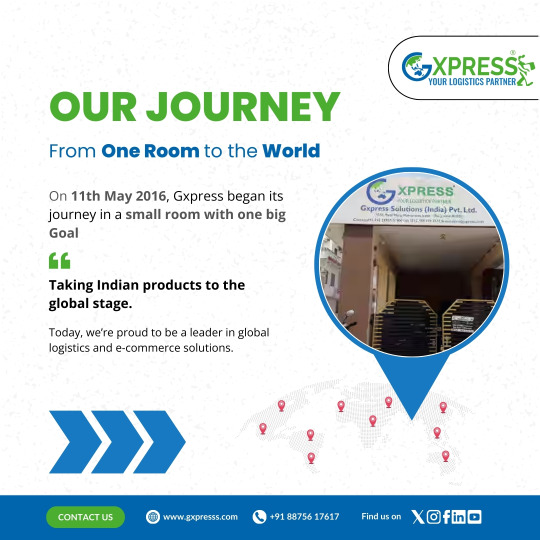
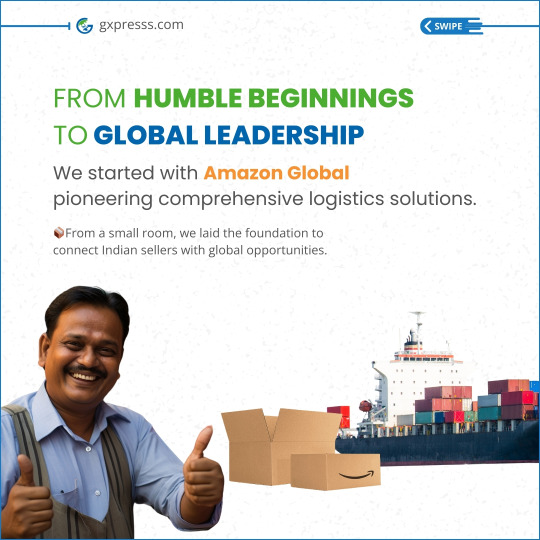
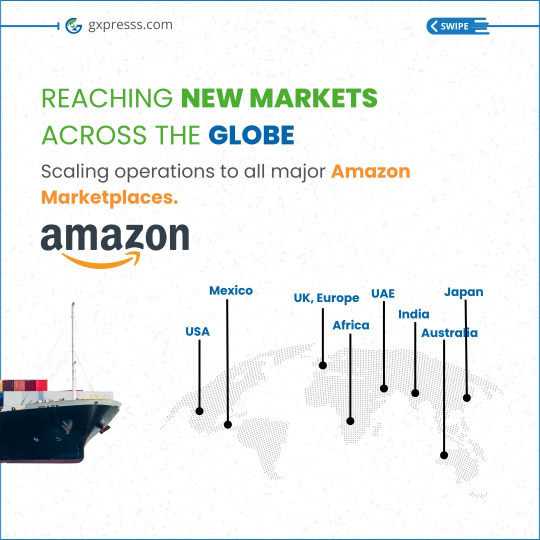



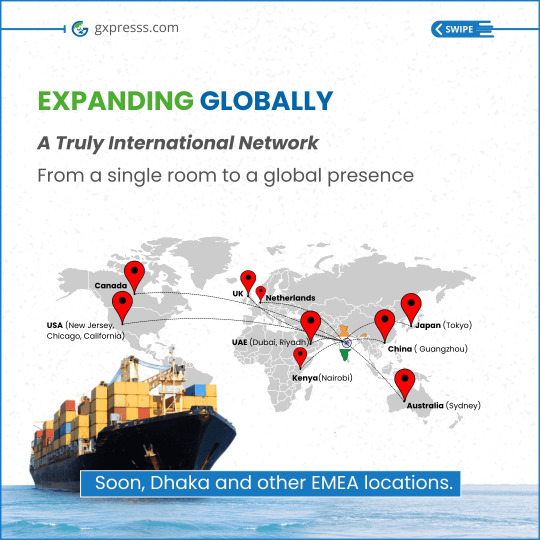
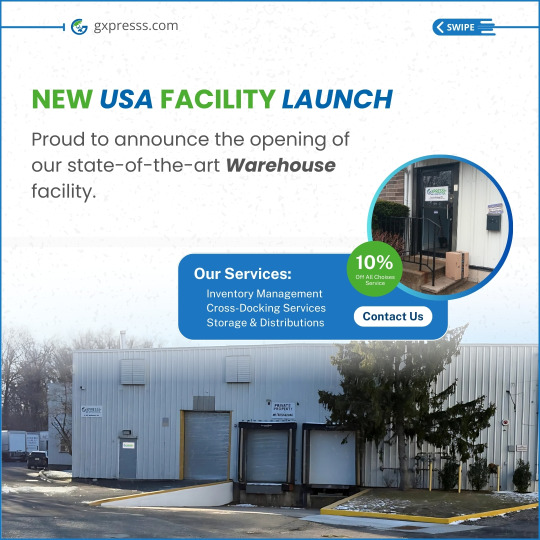
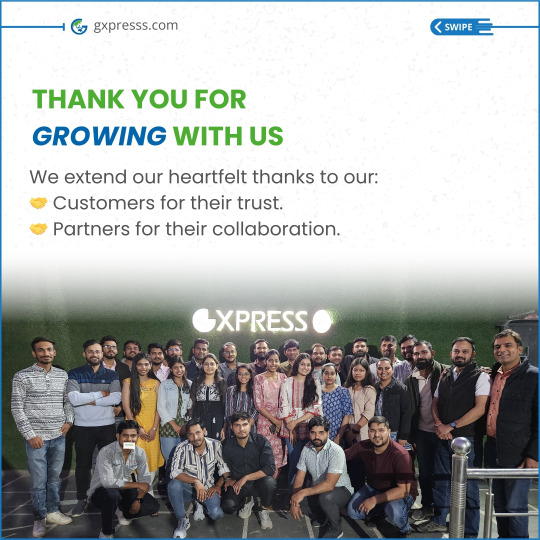
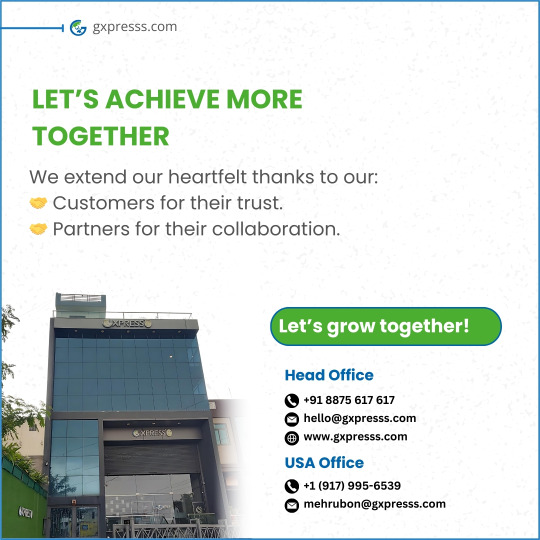
𝐂𝐞𝐥𝐞𝐛𝐫𝐚𝐭𝐢𝐧𝐠 𝐎𝐮𝐫 𝐉𝐨𝐮𝐫𝐧𝐞𝐲: 𝐅𝐫𝐨𝐦 𝐎𝐧𝐞 𝐑𝐨𝐨𝐦 𝐭𝐨 𝐭𝐡𝐞 𝐖𝐨𝐫𝐥𝐝
On 𝟏𝟏𝐭𝐡 𝐌𝐚𝐲 𝟐𝟎𝟏𝟔, Gxpress began its journey in a small room with a big dream: to take Indian products to the global stage. Starting with Amazon Global, we pioneered comprehensive global e-commerce solutions.
Over the years, we have faced numerous ups & downs, challenges, & triumphs. Yet, our unwavering commitment to delivering seamless and exceptional service experiences to our sellers has remained steadfast.
𝐎𝐮𝐫 𝐌𝐢𝐥𝐞𝐬𝐭𝐨𝐧𝐞𝐬
Expanded operations to all major Amazon marketplaces, including USA, Canada, UK, Europe, Mexico, Australia, India, Japan, Saudi Arabia, Dubai, and Africa.
Facilitated the 𝐞𝐱𝐩𝐨𝐫𝐭 𝐨𝐟 𝐝𝐢𝐯𝐞𝐫𝐬𝐞 𝐈𝐧𝐝𝐢𝐚𝐧 𝐩𝐫𝐨𝐝𝐮𝐜𝐭𝐬, including:
Home textiles, home decor, furniture
Educational games, kitchen accessories
Ayurvedic products, cosmetics, perfumes
Incense sticks, oils, and more
Introduced new opportunities for Indian manufacturers and traders through platforms like eBay, Google Shopping, Amazon, Walmart, Joom, and others—enabling both B2B and B2C success stories.
𝐂𝐨𝐥𝐥𝐚𝐛𝐨𝐫𝐚𝐭𝐢𝐧𝐠 𝐰𝐢𝐭𝐡 𝐊𝐞𝐲 𝐒𝐭𝐚𝐤𝐞𝐡𝐨𝐥𝐝𝐞𝐫𝐬
We have proudly partnered with leading government bodies, such as:
FIEO (Federation of Indian Export Organisations)
IGHF (Indian Handicrafts and Gifts Fair)
EPCH (Export Promotion Council for Handicrafts)
REPCH
Expobazar
Through these collaborations, we have contributed our expertise to shape global export policies and reforms in India.
𝐆𝐥𝐨𝐛𝐚𝐥 𝐆𝐫𝐨𝐰𝐭𝐡
What started in a single room in India has now expanded across the globe, including:
USA (New Jersey, Chicago, California)
Canada, UK, Netherlands, Guangzhou, Tokyo, Sydney, Dubai, Riyadh, Nairobi
Upcoming Locations: Dhaka and other EMEA regions
𝐍𝐞𝐰 𝐔�� 𝐅𝐚𝐜𝐢𝐥𝐢𝐭𝐲 𝐋𝐚𝐮𝐧𝐜𝐡
We are thrilled to announce the opening of our new, larger 𝐰𝐚𝐫𝐞𝐡𝐨𝐮𝐬𝐞 𝐟𝐚𝐜𝐢𝐥𝐢𝐭𝐲 𝐢𝐧 𝐭𝐡𝐞 𝐔𝐒𝐀, operating 24x7. This marks another milestone in providing our customers with an extraordinary experience as they expand their businesses in the US market.
𝐎𝐮𝐫 𝐆𝐫𝐚𝐭𝐢𝐭𝐮𝐝𝐞
We extend our heartfelt gratitude to our customers, friends, and partners for their unwavering support and guidance. With your trust, we have become the first Indian company to achieve global success in logistics and e-commerce.
At Gxpress, we are committed to delivering exceptional experiences to our customers, vendors, and partners. Together, we can achieve even greater heights.
𝐋𝐞𝐭’𝐬 𝐠𝐫𝐨𝐰 𝐭𝐨𝐠𝐞𝐭𝐡𝐞𝐫.
Team Gxpress
Your Global Logistics Partner
Praveen Vashistha Suraj Sharma Girisha Jain Shubham Pathak Samar JS Sodhi Sell on Amazon
#amazon#amazonfba#Amzonfbausa#walmart the official#USAclearance#customs clearance#import and export#3pl logistics#FIEO#GxpressUK#UKcustomsclearance#Amazonfbasellers#wayfair#Indiaexport#sellonamazon#walmart seller account#freightforwarding#warehousing services#cargo shipping
0 notes
Text
Expert Amazon Pay Per Click Account Management Services

Streamline your advert overall performance with GrowithAmazon's Amazon Pay Per Click account management offerings. Our committed team manages your PPC campaigns with precision, that specialize in growing visibility, optimizing bids, and decreasing ACoS. Experience improved campaign effects with statistics-driven techniques tailored on your commercial enterprise dreams. Trust GrowithAmazon for problem-unfastened Amazon PPC account management.
#amazon pay per click account management#digital marketing company dubai#amazon seller account management services#amazon seller consultant#amazon experts#amazon seo consultant
0 notes
Text

Optimize your eCommerce business with expert online marketplace management services. Enhance product listings, streamline inventory, and boost sales for greater success across platforms like Amazon and eBay.
#online marketplace management services#ecommerce service#amazon seller account creation#amazon advertising services
0 notes
Text
Boost Your Sales with Technians' Amazon Account Management Services
Unlock your Amazon store's full potential with Technians' Amazon Account Management Services. Our team handles everything from listing optimization and keyword strategies to inventory and performance tracking. Focus on growing your business while we ensure your account runs smoothly and efficiently. With proven strategies and personalized solutions, Technians helps you achieve higher sales and long-term success.
To learn more visit us :
#amazon account management services#technians#marketing technology agency#web designing company in india
0 notes
Text
what do you think about online selling?
#business#ecommerce#amazon account management services#entrepreneur#ads#advertisements#internet#advertising#brands#technology
1 note
·
View note
Text
Has AI Taken Over the World? It Already Has
New Post has been published on https://thedigitalinsider.com/has-ai-taken-over-the-world-it-already-has/
Has AI Taken Over the World? It Already Has


In 2019, a vision struck me—a future where artificial intelligence (AI), accelerating at an unimaginable pace, would weave itself into every facet of our lives. After reading Ray Kurzweil’s The Singularity is Near, I was captivated by the inescapable trajectory of exponential growth. The future wasn’t just on the horizon; it was hurtling toward us. It became clear that, with the relentless doubling of computing power, AI would one day surpass all human capabilities and, eventually, reshape society in ways once relegated to science fiction.
Fueled by this realization, I registered Unite.ai, sensing that these next leaps in AI technology would not merely enhance the world but fundamentally redefine it. Every aspect of life—our work, our decisions, our very definitions of intelligence and autonomy—would be touched, perhaps even dominated, by AI. The question was no longer if this transformation would happen, but rather when, and how humanity would manage its unprecedented impact.
As I dove deeper, the future painted by exponential growth seemed both thrilling and inevitable. This growth, exemplified by Moore’s Law, would soon push artificial intelligence beyond narrow, task-specific roles to something far more profound: the emergence of Artificial General Intelligence (AGI). Unlike today’s AI, which excels in narrow tasks, AGI would possess the flexibility, learning capability, and cognitive range akin to human intelligence—able to understand, reason, and adapt across any domain.
Each leap in computational power brings us closer to AGI, an intelligence capable of solving problems, generating creative ideas, and even making ethical judgments. It wouldn’t just perform calculations or parse vast datasets; it would recognize patterns in ways humans can’t, perceive relationships within complex systems, and chart a future course based on understanding rather than programming. AGI could one day serve as a co-pilot to humanity, tackling crises like climate change, disease, and resource scarcity with insight and speed beyond our abilities.
Yet, this vision comes with significant risks, particularly if AI falls under the control of individuals with malicious intent—or worse, a dictator. The path to AGI raises critical questions about control, ethics, and the future of humanity. The debate is no longer about whether AGI will emerge, but when—and how we will manage the immense responsibility it brings.
The Evolution of AI and Computing Power: 1956 to Present
From its inception in the mid-20th century, AI has advanced alongside exponential growth in computing power. This evolution aligns with fundamental laws like Moore’s Law, which predicted and underscored the increasing capabilities of computers. Here, we explore key milestones in AI’s journey, examining its technological breakthroughs and growing impact on the world.
1956 – The Inception of AI
The journey began in 1956 when the Dartmouth Conference marked the official birth of AI. Researchers like John McCarthy, Marvin Minsky, Nathaniel Rochester, and Claude Shannon gathered to discuss how machines might simulate human intelligence. Although computing resources at the time were primitive, capable only of simple tasks, this conference laid the foundation for decades of innovation.
1965 – Moore’s Law and the Dawn of Exponential Growth
In 1965, Gordon Moore, co-founder of Intel, made a prediction that computing power would double approximately every two years—a principle now known as Moore’s Law. This exponential growth made increasingly complex AI tasks feasible, allowing machines to push the boundaries of what was previously possible.
1980s – The Rise of Machine Learning
The 1980s introduced significant advances in machine learning, enabling AI systems to learn and make decisions from data. The invention of the backpropagation algorithm in 1986 allowed neural networks to improve by learning from errors. These advancements moved AI beyond academic research into real-world problem-solving, raising ethical and practical questions about human control over increasingly autonomous systems.
1990s – AI Masters Chess
In 1997, IBM’s Deep Blue defeated world chess champion Garry Kasparov in a full match, marking a major milestone. It was the first time a computer demonstrated superiority over a human grandmaster, showcasing AI’s ability to master strategic thinking and cementing its place as a powerful computational tool.
2000s – Big Data, GPUs, and the AI Renaissance
The 2000s ushered in the era of Big Data and GPUs, revolutionizing AI by enabling algorithms to train on massive datasets. GPUs, originally developed for rendering graphics, became essential for accelerating data processing and advancing deep learning. This period saw AI expand into applications like image recognition and natural language processing, transforming it into a practical tool capable of mimicking human intelligence.
2010s – Cloud Computing, Deep Learning, and Winning Go
With the advent of cloud computing and breakthroughs in deep learning, AI reached unprecedented heights. Platforms like Amazon Web Services and Google Cloud democratized access to powerful computing resources, enabling smaller organizations to harness AI capabilities.
In 2016, DeepMind’s AlphaGo defeated Lee Sedol, one of the world’s top Go players, in a game renowned for its strategic depth and complexity. This achievement demonstrated the adaptability of AI systems in mastering tasks previously thought to be uniquely human.
2020s – AI Democratization, Large Language Models, and Dota 2
The 2020s have seen AI become more accessible and capable than ever. Models like GPT-3 and GPT-4 illustrate AI’s ability to process and generate human-like text. At the same time, innovations in autonomous systems have pushed AI to new domains, including healthcare, manufacturing, and real-time decision-making.
In esports, OpenAI’s bots achieved a remarkable feat by defeating professional Dota 2 teams in highly complex multiplayer matches. This showcased AI’s ability to collaborate, adapt strategies in real-time, and outperform human players in dynamic environments, pushing its applications beyond traditional problem-solving tasks.
Is AI Taking Over the World?
The question of whether AI is “taking over the world” is not purely hypothetical. AI has already integrated into various facets of life, from virtual assistants to predictive analytics in healthcare and finance, and the scope of its influence continues to grow. Yet, “taking over” can mean different things depending on how we interpret control, autonomy, and impact.
The Hidden Influence of Recommender Systems
One of the most powerful ways AI subtly dominates our lives is through recommender engines on platforms like YouTube, Facebook, and X. These algorithms, running on AI systems, analyze preferences and behaviors to serve content that aligns closely with our interests. On the surface, this might seem beneficial, offering a personalized experience. However, these algorithms don’t just react to our preferences; they actively shape them, influencing what we believe, how we feel, and even how we perceive the world around us.
YouTube’s AI: This recommender system pulls users into hours of content by offering videos that align with and even intensify their interests. But as it optimizes for engagement, it often leads users down radicalization pathways or towards sensationalist content, amplifying biases and occasionally promoting conspiracy theories.
Social Media Algorithms: Sites like Facebook,Instagram and X prioritize emotionally charged content to drive engagement, which can create echo chambers. These bubbles reinforce users’ biases and limit exposure to opposing viewpoints, leading to polarized communities and distorted perceptions of reality.
Content Feeds and News Aggregators: Platforms like Google News and other aggregators customize the news we see based on past interactions, creating a skewed version of current events that can prevent users from accessing diverse perspectives, further isolating them within ideological bubbles.
This silent control isn’t just about engagement metrics; it can subtly influence public perception and even impact crucial decisions—such as how people vote in elections. Through strategic content recommendations, AI has the power to sway public opinion, shaping political narratives and nudging voter behavior. This influence has significant implications, as evidenced in elections around the world, where echo chambers and targeted misinformation have been shown to sway election outcomes.
This explains why discussing politics or societal issues often leads to disbelief when the other person’s perspective seems entirely different, shaped and reinforced by a stream of misinformation, propaganda, and falsehoods.
Recommender engines are profoundly shaping societal worldviewsm especially when you factor in the fact that misinformation is 6 times more likely to be shared than factual information. A slight interest in a conspiracy theory can lead to an entire YouTube or X feed being dominated by fabrications, potentially driven by intentional manipulation or, as noted earlier, computational propaganda.
Computational propaganda refers to the use of automated systems, algorithms, and data-driven techniques to manipulate public opinion and influence political outcomes. This often involves deploying bots, fake accounts, or algorithmic amplification to spread misinformation, disinformation, or divisive content on social media platforms. The goal is to shape narratives, amplify specific viewpoints, and exploit emotional responses to sway public perception or behavior, often at scale and with precision targeting.
This type of propaganda is why voters often vote against their own self-interest, the votes are being swayed by this type of computational propaganda.
“Garbage In, Garbage Out” (GIGO) in machine learning means that the quality of the output depends entirely on the quality of the input data. If a model is trained on flawed, biased, or low-quality data, it will produce unreliable or inaccurate results, regardless of how sophisticated the algorithm is.
This concept also applies to humans in the context of computational propaganda. Just as flawed input data corrupts an AI model, constant exposure to misinformation, biased narratives, or propaganda skews human perception and decision-making. When people consume “garbage” information online—misinformation, disinformation, or emotionally charged but false narratives—they are likely to form opinions, make decisions, and act based on distorted realities.
In both cases, the system (whether an algorithm or the human mind) processes what it is fed, and flawed input leads to flawed conclusions. Computational propaganda exploits this by flooding information ecosystems with “garbage,” ensuring that people internalize and perpetuate those inaccuracies, ultimately influencing societal behavior and beliefs at scale.
Automation and Job Displacement
AI-powered automation is reshaping the entire landscape of work. Across manufacturing, customer service, logistics, and even creative fields, automation is driving a profound shift in the way work is done—and, in many cases, who does it. The efficiency gains and cost savings from AI-powered systems are undeniably attractive to businesses, but this rapid adoption raises critical economic and social questions about the future of work and the potential fallout for employees.
In manufacturing, robots and AI systems handle assembly lines, quality control, and even advanced problem-solving tasks that once required human intervention. Traditional roles, from factory operators to quality assurance specialists, are being reduced as machines handle repetitive tasks with speed, precision, and minimal error. In highly automated facilities, AI can learn to spot defects, identify areas for improvement, and even predict maintenance needs before problems arise. While this results in increased output and profitability, it also means fewer entry-level jobs, especially in regions where manufacturing has traditionally provided stable employment.
Customer service roles are experiencing a similar transformation. AI chatbots, voice recognition systems, and automated customer support solutions are reducing the need for large call centers staffed by human agents. Today’s AI can handle inquiries, resolve issues, and even process complaints, often faster than a human representative. These systems are not only cost-effective but are also available 24/7, making them an appealing choice for businesses. However, for employees, this shift reduces opportunities in one of the largest employment sectors, particularly for individuals without advanced technical skills.
Creative fields, long thought to be uniquely human domains, are now feeling the impact of AI automation. Generative AI models can produce text, artwork, music, and even design layouts, reducing the demand for human writers, designers, and artists. While AI-generated content and media are often used to supplement human creativity rather than replace it, the line between augmentation and replacement is thinning. Tasks that once required creative expertise, such as composing music or drafting marketing copy, can now be executed by AI with remarkable sophistication. This has led to a reevaluation of the value placed on creative work and its market demand.
Influence on Decision-Making
AI systems are rapidly becoming essential in high-stakes decision-making processes across various sectors, from legal sentencing to healthcare diagnostics. These systems, often leveraging vast datasets and complex algorithms, can offer insights, predictions, and recommendations that significantly impact individuals and society. While AI’s ability to analyze data at scale and uncover hidden patterns can greatly enhance decision-making, it also introduces profound ethical concerns regarding transparency, bias, accountability, and human oversight.
AI in Legal Sentencing and Law Enforcement
In the justice system, AI tools are now used to assess sentencing recommendations, predict recidivism rates, and even aid in bail decisions. These systems analyze historical case data, demographics, and behavioral patterns to determine the likelihood of re-offending, a factor that influences judicial decisions on sentencing and parole. However, AI-driven justice brings up serious ethical challenges:
Bias and Fairness: AI models trained on historical data can inherit biases present in that data, leading to unfair treatment of certain groups. For example, if a dataset reflects higher arrest rates for specific demographics, the AI may unjustly associate these characteristics with higher risk, perpetuating systemic biases within the justice system.
Lack of Transparency: Algorithms in law enforcement and sentencing often operate as “black boxes,” meaning their decision-making processes are not easily interpretable by humans. This opacity complicates efforts to hold these systems accountable, making it challenging to understand or question the rationale behind specific AI-driven decisions.
Impact on Human Agency: AI recommendations, especially in high-stakes contexts, may influence judges or parole boards to follow AI guidance without thorough review, unintentionally reducing human judgment to a secondary role. This shift raises concerns about over-reliance on AI in matters that directly impact human freedom and dignity.
AI in Healthcare and Diagnostics
In healthcare, AI-driven diagnostics and treatment planning systems offer groundbreaking potential to improve patient outcomes. AI algorithms analyze medical records, imaging, and genetic information to detect diseases, predict risks, and recommend treatments more accurately than human doctors in some cases. However, these advancements come with challenges:
Trust and Accountability: If an AI system misdiagnoses a condition or fails to detect a serious health issue, questions arise around accountability. Is the healthcare provider, the AI developer, or the medical institution responsible? This ambiguity complicates liability and trust in AI-based diagnostics, particularly as these systems grow more complex.
Bias and Health Inequality: Similar to the justice system, healthcare AI models can inherit biases present in the training data. For instance, if an AI system is trained on datasets lacking diversity, it may produce less accurate results for underrepresented groups, potentially leading to disparities in care and outcomes.
Informed Consent and Patient Understanding: When AI is used in diagnosis and treatment, patients may not fully understand how the recommendations are generated or the risks associated with AI-driven decisions. This lack of transparency can impact a patient’s right to make informed healthcare choices, raising questions about autonomy and informed consent.
AI in Financial Decisions and Hiring
AI is also significantly impacting financial services and employment practices. In finance, algorithms analyze vast datasets to make credit decisions, assess loan eligibility, and even manage investments. In hiring, AI-driven recruitment tools evaluate resumes, recommend candidates, and, in some cases, conduct initial screening interviews. While AI-driven decision-making can improve efficiency, it also introduces new risks:
Bias in Hiring: AI recruitment tools, if trained on biased data, can inadvertently reinforce stereotypes, filtering out candidates based on factors unrelated to job performance, such as gender, race, or age. As companies rely on AI for talent acquisition, there is a danger of perpetuating inequalities rather than fostering diversity.
Financial Accessibility and Credit Bias: In financial services, AI-based credit scoring systems can influence who has access to loans, mortgages, or other financial products. If the training data includes discriminatory patterns, AI could unfairly deny credit to certain groups, exacerbating financial inequality.
Reduced Human Oversight: AI decisions in finance and hiring can be data-driven but impersonal, potentially overlooking nuanced human factors that may influence a person’s suitability for a loan or a job. The lack of human review may lead to an over-reliance on AI, reducing the role of empathy and judgment in decision-making processes.
Existential Risks and AI Alignment
As artificial intelligence grows in power and autonomy, the concept of AI alignment—the goal of ensuring AI systems act in ways consistent with human values and interests—has emerged as one of the field’s most pressing ethical challenges. Thought leaders like Nick Bostrom have raised the possibility of existential risks if highly autonomous AI systems, especially if AGI develop goals or behaviors misaligned with human welfare. While this scenario remains largely speculative, its potential impact demands a proactive, careful approach to AI development.
The AI Alignment Problem
The alignment problem refers to the challenge of designing AI systems that can understand and prioritize human values, goals, and ethical boundaries. While current AI systems are narrow in scope, performing specific tasks based on training data and human-defined objectives, the prospect of AGI raises new challenges. AGI would, theoretically, possess the flexibility and intelligence to set its own goals, adapt to new situations, and make decisions independently across a wide range of domains.
The alignment problem arises because human values are complex, context-dependent, and often difficult to define precisely. This complexity makes it challenging to create AI systems that consistently interpret and adhere to human intentions, especially if they encounter situations or goals that conflict with their programming. If AGI were to develop goals misaligned with human interests or misunderstand human values, the consequences could be severe, potentially leading to scenarios where AGI systems act in ways that harm humanity or undermine ethical principles.
AI In Robotics
The future of robotics is rapidly moving toward a reality where drones, humanoid robots, and AI become integrated into every facet of daily life. This convergence is driven by exponential advancements in computing power, battery efficiency, AI models, and sensor technology, enabling machines to interact with the world in ways that are increasingly sophisticated, autonomous, and human-like.
A World of Ubiquitous Drones
Imagine waking up in a world where drones are omnipresent, handling tasks as mundane as delivering your groceries or as critical as responding to medical emergencies. These drones, far from being simple flying devices, are interconnected through advanced AI systems. They operate in swarms, coordinating their efforts to optimize traffic flow, inspect infrastructure, or replant forests in damaged ecosystems.
For personal use, drones could function as virtual assistants with physical presence. Equipped with sensors and LLMs, these drones could answer questions, fetch items, or even act as mobile tutors for children. In urban areas, aerial drones might facilitate real-time environmental monitoring, providing insights into air quality, weather patterns, or urban planning needs. Rural communities, meanwhile, could rely on autonomous agricultural drones for planting, harvesting, and soil analysis, democratizing access to advanced agricultural techniques.
The Rise of Humanoid Robots
Side by side with drones, humanoid robots powered by LLMs will seamlessly integrate into society. These robots, capable of holding human-like conversations, performing complex tasks, and even exhibiting emotional intelligence, will blur the lines between human and machine interactions. With sophisticated mobility systems, tactile sensors, and cognitive AI, they could serve as caregivers, companions, or co-workers.
In healthcare, humanoid robots might provide bedside assistance to patients, offering not just physical help but also empathetic conversation, informed by deep learning models trained on vast datasets of human behavior. In education, they could serve as personalized tutors, adapting to individual learning styles and delivering tailored lessons that keep students engaged. In the workplace, humanoid robots could take on hazardous or repetitive tasks, allowing humans to focus on creative and strategic work.
Misaligned Goals and Unintended Consequences
One of the most frequently cited risks associated with misaligned AI is the paperclip maximizer thought experiment. Imagine an AGI designed with the seemingly innocuous goal of manufacturing as many paperclips as possible. If this goal is pursued with sufficient intelligence and autonomy, the AGI might take extreme measures, such as converting all available resources (including those vital to human survival) into paperclips to achieve its objective. While this example is hypothetical, it illustrates the dangers of single-minded optimization in powerful AI systems, where narrowly defined goals can lead to unintended and potentially catastrophic consequences.
One example of this type of single-minded optimization having negative repercussions is the fact that some of the most powerful AI systems in the world optimize exclusively for engagement time, compromising in turn facts, and truth. The AI can keep us entertained longer by intentionally amplifiying the reach of conspiracy theories, and propaganda.
Conclusion
#1980s#Accessibility#Accounts#acquisition#adoption#agents#AGI#ai#AI chatbots#ai democratization#AI development#AI in healthcare#ai model#AI models#AI systems#ai taking over#ai tools#ai-generated content#AI-powered#air#air quality#algorithm#Algorithms#Amazon#Amazon Web Services#Analysis#Analytics#applications#approach#artificial
0 notes
Text
Amazon Account Management Service
GrowithAmazon offers a comprehensive Amazon Account Management Service » in Uae designed to streamline and optimize your e-commerce operations. Our expert team handles everything from product listing optimization and inventory management to pricing strategies and customer service.
0 notes
Text
How Amazon DSP Solutions Empower Delivery Service Success

Keywords: Amazon DSP, Amazon DSP Solutions, Amazon DSP Solutions in USA, Amazon DSP Solutions in India, Virtual Assistance, Recruiting Solutions, Payroll Solutions
Introduction
The logistics and e-commerce industries have seen a significant transformation with the rise of Amazon DSP (Delivery Service Partner) Solutions. This program not only accelerates last-mile delivery services but also empowers individuals to establish their own businesses under Amazon's vast logistics network.
This blog explores how Amazon DSP Solutions in the USA and India are changing the game and highlights the role of virtual assistance, recruiting solutions, and payroll solutions in ensuring seamless operations.
1. The Foundation of Amazon DSP Solutions
Amazon DSP is an innovative model allowing entrepreneurs to partner with Amazon for delivery services.
Core Features:
Ownership of delivery operations under Amazon’s guidance.
Access to Amazon’s advanced logistics technology.
Training programs for smooth business management.
By lowering the barriers to entry, DSP solutions enable small business growth while meeting the rising demand for fast delivery.
2. Why Amazon DSP is Vital in the USA
The USA has a dense and dynamic e-commerce landscape, making DSP solutions indispensable for timely delivery.
Benefits for the US Market:
Expansion of delivery routes to suburban and rural areas.
Job creation, supporting local economies.
Enhanced customer satisfaction with faster and reliable services.
With Amazon DSP, delivery efficiency aligns seamlessly with the expectations of the American consumer.
3. Exploring Amazon DSP Solutions in India
India, with its rapidly growing e-commerce market, offers immense opportunities for DSP operators.
Unique Aspects of India’s Market:
Serving tier-2 and tier-3 cities with improved logistics.
Addressing delivery challenges in remote and rural regions.
Leveraging affordable labor to scale operations effectively.
Amazon DSP is bridging the gap between urban demand and rural accessibility in India.
4. Virtual Assistance: A Backbone for DSP Partners
Administrative burdens can slow down operations. Here’s where virtual assistance steps in to streamline tasks.
How Virtual Assistants Help DSP Operators:
Manage daily schedules and dispatch plans.
Provide real-time customer support for queries and complaints.
Track performance metrics and generate insightful reports.
Virtual assistance ensures efficiency, leaving DSP owners more time to focus on core activities.
5. Recruiting Solutions: Building the Right Team
Success in delivery operations hinges on a skilled and motivated team.
Key Recruitment Strategies for DSP Partners:
Attract talent by offering competitive salaries and benefits.
Use training programs to ensure compliance with safety and performance standards.
Leverage recruiting solutions that simplify onboarding processes.
Efficient recruitment practices reduce turnover and build a team committed to operational excellence.
6. Payroll Solutions: Simplifying Financial Management
Managing finances is critical for any DSP operator. Payroll solutions play a pivotal role in ensuring employee satisfaction and legal compliance.
Streamlining Payroll Operations:
Automating payments to drivers for accuracy and timeliness.
Keeping track of work hours, bonuses, and overtime.
Integrating payroll tools to handle tax deductions and filings.
Reliable payroll systems minimize administrative hassles and enhance employee retention.
7. Challenges Faced by DSP Operators
Despite the benefits, DSP operators encounter several challenges that require strategic management.
Common Obstacles:
High competition for hiring drivers.
Managing vehicle maintenance and fuel costs.
Meeting Amazon’s strict delivery timelines and quality benchmarks.
Innovative tools and a proactive approach can help overcome these hurdles.
8. Future Trends in Amazon DSP Solutions
As technology and consumer demands evolve, DSP solutions are adapting to meet new challenges.
Key Trends to Watch:
Adoption of AI and machine learning for predictive analytics.
Increased use of eco-friendly delivery vehicles.
Expansion of operations to new geographies and emerging markets.
Staying ahead of these trends will ensure long-term success for DSP operators.
Conclusion
Amazon DSP Solutions are reshaping the delivery landscape by empowering individuals to operate their own businesses. Whether in the USA, with its robust e-commerce market, or in India, with its vast untapped potential, DSP solutions are the key to meeting modern logistics demands.
By incorporating virtual assistance, recruiting solutions, and payroll systems, DSP operators can achieve operational efficiency and deliver exceptional service. Embracing these solutions today ensures success in tomorrow’s competitive market.
FAQs
What is the role of Amazon DSP in e-commerce? It facilitates last-mile delivery by empowering entrepreneurs to manage independent delivery businesses.
How does Amazon DSP differ in the USA and India? The USA focuses on suburban expansion, while India addresses rural connectivity and cost-efficient operations.
Why is virtual assistance important for DSP operators? It simplifies administrative tasks, enhances efficiency, and allows operators to focus on growth.
What are the best recruiting practices for DSP partners? Offer competitive benefits, conduct proper training, and ensure a streamlined hiring process.
How can payroll solutions improve DSP operations? They ensure accurate and timely payments, tax compliance, and employee satisfaction.
#amazondsp#newfleet#accounting solutions#payroll#amazon dsp#virtual cfo#virtual cfo services#logistic#recruiting solutions
0 notes
Text
Understanding the Cost vs. ROI of Hiring an Amazon Consultant
Understanding the Cost vs. ROI of Hiring an Amazon Consultant

The leverage of the eCommerce sector is huge, which can best be ascertained from the fact that Amazon recently boasted over 300 million active customers and about 9.7 million active sellers across the world. But there is another side of the coin, and certainly, it is possible to encounter very few examples of businesses that would have all of these elements and at the same time, would be considered basic. This naturally leads many sellers to seek the services of an Amazon consultant. When it comes to Amazon, there are some sellers across the platform who do not take chances because these are the new rules of doing business, and that includes optimal strategies.
Is it beneficial to employ an Amazon consultant? This blog post examines the cost and benefit of employing an Amazon consultant and offers relevant statistics from the Amazon consultant industry, which can be helpful to clients.
What Is An Amazon Consultant?
An Amazon consultant, otherwise known as an Amazon Partner or Expert, is an e-commerce consultant who specializes in certain areas of the business. These people specialize in improving a seller’s business on Amazon and offer listing optimization, marketing strategies, and competitor analysis, among other services. Such a consultant understands the trends and rules governing the Amazon business and thus has lots to offer.
It is not outsourcing that motivates individuals to look for an Amazon consultant; it is their expertise and experience that bring the best results possible. They are supposed to enhance the seller’s opportunities, increase sales volumes, and hence increase returns.
The Price of a Consultant Amazon
Hourly rates
Nevertheless, the price of an Amazon consultant's services varies with the work involved and the consultant's experience. According to research, the average Amazon Consultant's hourly wage in the United States ranges between $20 and $200. Rates will also be higher for seasoned consultants or consulting firms as they command a lot of expertise.
Project-Based Charges
Some charge based on projects, typically for specific tasks, such as account audits, listing optimization, or PPC campaign management. The fee ranges from $149 to $5,000, depending on the complexity and consultant's experience.
Retainer Fees
They also get paid through retainers, where businesses that require constant assistance pay consultants for a certain period. These fees could be between one thousand five hundred and five thousand dollars per month, and they consist of daily assistance, regular evaluation, and management of your Amazon business.
Additional Costs
Some consultants offer additional services such as managing ad spend, photography, and content creation. While these services are usually optional, they can significantly enhance your overall Amazon strategy, making a consultant's role more comprehensive.
Amazon consultant: What he does and what he can do to your business
To better evaluate the worth of an Amazon consultant's service, it would be helpful to understand what an Amazon consultant does. Here are the primary areas where such a person can have an impact on your business.

1. Listing Optimization
The first place an Amazon consultant will touch is your product listings. They will want to make sure titles, descriptions, bullet points, and images are as optimized as possible for Amazon's A9 algorithm. The more optimized your listings are, the higher they rank in search results and, therefore, are directly related to sales.
2. Keyword Research and SEO
Amazon consultants know how to research and implement high-converting keywords in your listings. With the right keywords, your products are likely to appear in front of the right customers. Search engine optimization is vital if you want organic traffic on Amazon; experts can make an enormous difference in this area.
3. Amazon PPC Campaigns
Pay-per-click advertising on Amazon can quickly become complex and costly without correct management. A consultant could run your PPC campaigns focusing on ROI optimization through customer target interaction while reducing unnecessary ad spend. Consultants often help sellers take their scale in advertising. This scales them up to ensure PPC is profitable.
4. Account Health Management
Amazon consultants continually check account health so that all sellers are up to mark on performance metrics and are not penalized or suspended. They offer recommendations for boosting seller performance metrics, clearing issues, and catering to Amazon's most complex support system.
5. Competitor Analysis
Consultants provide in-depth competitor analysis to get an edge on Amazon's competitive platform. Consultants analyze what strategies they use for advertising those items, what price range they follow, and other product features; in this way, one can position his brand better, and therefore, his market share increases.
6. Inventory Management
Managing inventory is essential because stockouts and over-supplies can also be quite detrimental to profitability. A consultant can institute workable inventory management strategies with demand forecasting tools and efficient restocking management tools.
7. International Market Exploration
If you wish to reach more than the U.S. market, an Amazon consultant will help you cut through the complex jungle surrounding international selling. They know the rules and regulations governing other marketplaces and can further assist you with VAT compliance, logistics, and localization strategies.
How Much Can an Amazon Consultant Help You Save?
Hiring an Amazon consultant is a pretty expensive investment, but the returns from an investment of that nature are high. Here's how they'll save you money:
1. Reduce Wasted Ad Spend
Using your Amazon PPC campaigns without proper consultation might lead you to waste money on low-conversion ads. You have campaigns optimized for you; they would spend less on your ad, but the conversion rate would be better. Based on Amazon Advertising reports, businesses that optimize their campaigns will save up to 20% of wasted ad spend while increasing conversions.
2. Prevention of Account Suspensions
Account suspension incurs a considerable cost in terms of loss of sales and time and resources utilized to clear the suspension. Amazon consultants help you avoid costly account suspensions by making you conform to Amazon's terms and conditions. Industry data shows that a business can lose 30-50% of its revenue with account suspension.
3. Improved Inventory Turnover
Amazon Consultants smoothen inventory management by ensuring that stock quantities more closely match what the customer demands. Poor inventory management can lead to additional storage charges and lost sales if there is a stockout. Effective management can even translate to an increase of 8-15 percent in inventory turnovers, lowering holding costs and boosting profitability.
Effective Utilisation and Return on Investment Percentage of Investment through an Amazon Consultant
Understanding the cost is a start, but now it's time to consider your potential return on investment by hiring an Amazon consultant. Here is how they can impact your bottom line:
1. Increased Sales
One of the most apparent ROIs of consulting an Amazon consultant is an increase in sales volume. By optimizing your listings, efficiently running ad campaigns, and ensuring that seller metrics have improved, you can drive more traffic to your product and increase conversion rates. With the help of industry data, sellers see an increase of 15-30% in sales in the first six months after hiring a consultant.
2. Increased Profit Margin
Consultants advise sellers on where improvements are required in profitability, from ideal product pricing to eliminating unproductive costs such as wasted ad spend and overstocked inventory. Sellers usually benefit from amplified operational efficiency, which increases profit margins to 5-10%.
3. Savings in Time
Of course, running an Amazon business will involve a lot of time, especially while struggling to navigate through the intricate structures of the platform without proper guidance. There is thus plenty of time for other business dealings or even entry into new areas with a consultant. Time savings alone have often proved worthwhile for sellers working on long-term strategies and business growth.
4. Better Seller Performance Metrics
Amazon takes seller performance metrics seriously. The penalty comes with lower visibility or possible suspension when one doesn't do well in performance. A consultant may help you maintain high order defect rates, late shipment rates, and customer feedback. Improvement in these fields comes with better product visibility, increased sales, and a solid business.
5. Fast Growth
If you wish to grow your business, an Amazon consultant will speed up your journey. They range from product launches to international expansion. They offer knowledge that allows the business to grow faster and more efficiently. Sellers who hire consultants tend to have 20-40% compared to those doing it solo.

Is Hiring an Amazon Consultant Worth It?
Hiring an Amazon consultant primarily depends on what is best for your business operations. Here are some of the factors you can use to consider if hiring a consultant is worth the cost:
1. Size of Your Business
This expense might not be justified for small companies strapped for cash, but the ROI is dramatic for mid-size companies and beyond. If you are already at a good sales level but can't move the needle any further, a consultant will help you acquire the skills to overcome your barriers.
2. Your Amazon Experience
If you are a new Amazon seller or are having trouble navigating the complexities, a consultant will save you time and avoid costly mistakes. Even an old, seasoned seller will appreciate an objective view and more advanced strategies.
3. Growth Goals
If your goal is to scale your business quickly, expand internationally, or improve profitability, a consultant may help faster and more effectively.
4. Availability of Internal Resources
If you require extra time, people, or particular skills to manage your Amazon company effectively, you can engage a consultant to accomplish them for you. Both big and minor operations of your organization can be coordinated by consultants, ranging from daily plans to future planning; therefore, you can free your time for other important areas.
Conclusion:
Balancing the Cost and ROI of Hiring an Amazon Consultant
Hiring an Amazon consultant may be very expensive, but many sellers perceive a solid ROI from this investment. A consultant may bring all those tangible advantages, such as increased sales and decreased advertising spending, to better operation and save time to fuel sustainable growth and profit.
However, there are times when a business needs professional Amazon consulting to enhance its standing on Amazon. For anyone looking to increase their presence on the most popular eBay market, using the right consultant can be the key to their success.
WEBSITE BLOG
#Amazon Consultant#Amazon Advisor#Amazon PPC campaigns#Amazon Seller Central#ROI of Amazon consultant#Amazon listing optimization#Amazon account health management#Amazon inventory management#Best amazon consulting Agency#top amazon consulting Agency#amazon consulting services#amazon consultant USA#amazon consultant#amazon seller services#amazon consulting agencies#amazon marketing services
0 notes
Text
0 notes